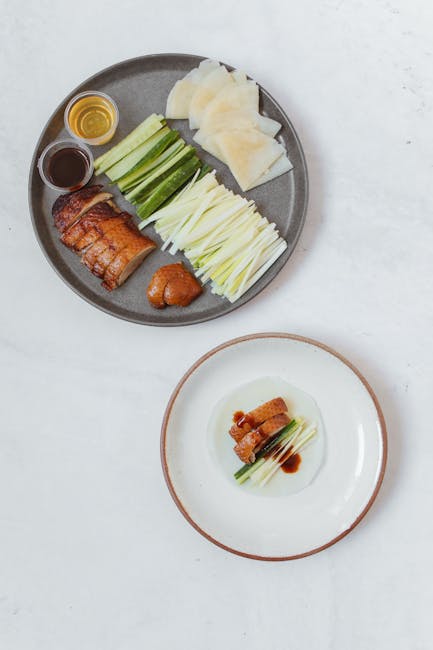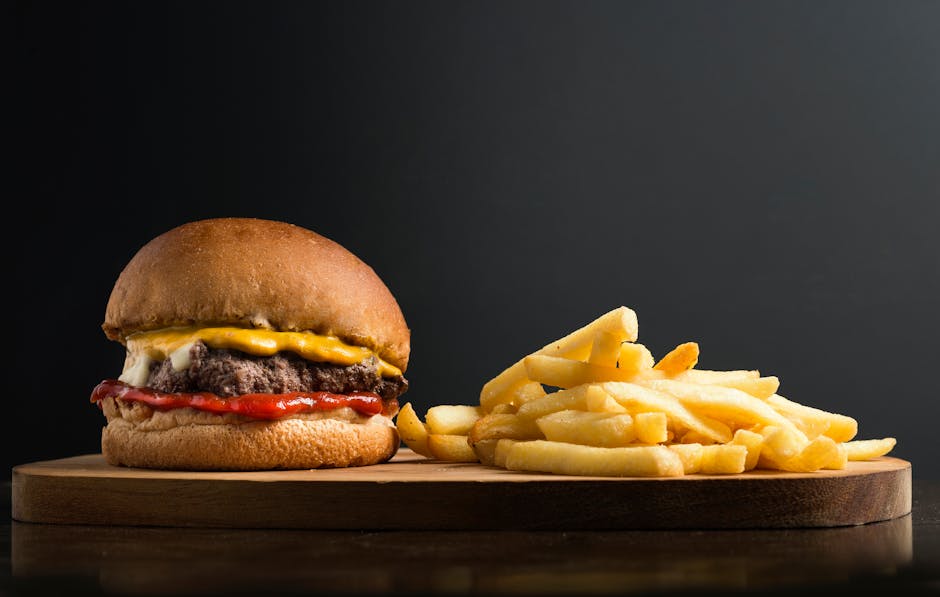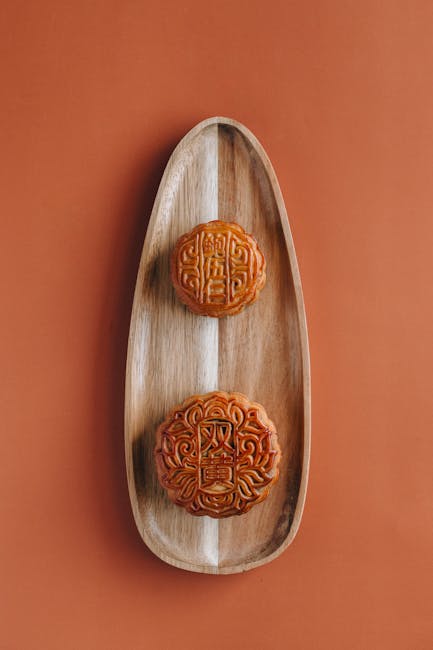Peking duck, or Beijing duck (北京烤鸭, Běijīng kǎoyā), is arguably China’s most famous dish, a culinary masterpiece renowned worldwide for its crispy skin and succulent meat. Its origins trace back centuries, with evidence suggesting a form of roasted duck existed during the Yuan Dynasty (1271-1368). However, the dish as we know it today truly blossomed during the Ming Dynasty (1368-1644), particularly within the imperial court. Recipes and techniques were refined over generations, becoming increasingly elaborate and sophisticated, solidifying its status as a celebratory and prestigious food.
The preparation of Peking duck is a meticulous process, a testament to centuries of culinary tradition. It’s not simply about roasting a duck; it’s an art form involving specific breeds of ducks, a precise air-drying process, and a unique method of inflation to achieve that signature crisp skin. The most common method involves inflating the duck’s cavity with air prior to roasting. This creates an even distribution of heat, resulting in the famously shatteringly crisp skin. The duck is then traditionally roasted in a wood-fired oven, using specific types of wood for optimal flavor and color. This intricate process often requires the combined expertise of several skilled chefs.
Beyond its exquisite taste, Peking duck holds significant cultural weight in China. It’s frequently served during important celebrations, festivals, and special occasions, symbolizing prosperity and good fortune. Historically, it was a dish reserved for the elite, further solidifying its status. Even today, its preparation and presentation remain quite formal, often involving a dedicated carving ceremony at the table. The dish is more than just food; it’s an experience, a cultural performance, and a symbol of Chinese culinary heritage. While precise statistics on annual consumption are difficult to obtain, the sheer popularity of Peking duck, both domestically and internationally, indicates its immense cultural and economic importance. Millions of ducks are consumed annually in Beijing alone, testament to its enduring appeal.
The global popularity of Peking duck has led to its adaptation and interpretation in various cuisines. While the traditional methods are highly prized, variations exist, reflecting regional preferences and modern techniques. However, the core elements – the perfectly crisp skin, tender meat, and the accompanying pancakes, scallions, and hoisin sauce – remain consistent, ensuring the continued legacy of this iconic dish. Its enduring popularity is a testament to its exceptional taste, rich history, and profound cultural significance.
Ingredients and Measurements
Creating authentic Peking Duck requires precise measurements and high-quality ingredients. The success of this dish hinges on the balance of flavors and the careful preparation of each component. Below is a detailed list of ingredients and their measurements for a whole duck (approximately 4-5 lbs):
For the Duck:
- 1 whole Peking duck (approximately 4-5 lbs), preferably a young, free-range duck for optimal tenderness and flavor. Ensure the duck is completely thawed and patted dry before proceeding.
- 2 tablespoons Shaoxing rice wine (or dry sherry as a substitute)
- 1 tablespoon dark soy sauce (for color and umami)
- 1 tablespoon light soy sauce (for balance of flavor)
- 1 teaspoon salt
- ½ teaspoon white pepper
- 1 tablespoon grated ginger
- 2 scallions, finely chopped (white and green parts separated)
For the Brine (Optional, but highly recommended):
Brining significantly enhances the duck’s moisture and flavor. This step is crucial, especially if you are using a larger or older duck.
- 4 cups water
- 2 tablespoons salt
- 1 tablespoon sugar
- 1 tablespoon Shaoxing rice wine
- 2 star anise
- 2 cloves garlic, crushed
- 1 inch piece of ginger, sliced
For the Air-Drying Process:
Allowing the duck to air-dry is essential for achieving that signature crispy skin. Air-drying for at least 8-12 hours, preferably overnight in a cool, dry place, is recommended.
For the Glaze (for basting):
- ½ cup maltose syrup (or honey as a substitute, although maltose provides a richer sheen and flavor)
- 2 tablespoons dark soy sauce
- 1 tablespoon rice vinegar
- 1 tablespoon sesame oil
For the Pancakes and Garnishes:
- 1 package of thin Mandarin pancakes (or you can make your own)
- ½ cup scallions, finely sliced
- ½ cup cucumber, julienned
- ½ cup sweet bean sauce (optional, but traditional)
Important Notes:
Accurate measurements are crucial for achieving the perfect balance of flavors. Use a kitchen scale for precise weighing, especially for the salt and sugar in the brine. Adjust quantities slightly depending on the size of your duck. If your duck is smaller than 4 lbs, reduce the ingredients proportionally. For larger ducks, you may need to increase the quantities accordingly. Always prioritize fresh, high-quality ingredients for the best results.
Equipment List: Delicious Chinese Peking Duck
Crafting a truly exceptional Peking Duck requires not only the finest ingredients but also the right tools. This equipment list outlines the essential items, along with recommendations for optimal results and alternatives where possible. Proper equipment significantly impacts the final quality and ease of preparation.
For the Duck Preparation & Hanging: You’ll need a sturdy, preferably metal, duck hanger capable of supporting a 4-5 pound duck. This is crucial for proper air circulation during the drying process. If a dedicated duck hanger isn’t available, a sturdy meat hook suspended from a beam or strong rack will suffice. Ensure the hanger is clean and sanitized before use.
A large, high-sided roasting pan (approximately 18×13 inches) is essential for even roasting. The high sides prevent fat splatter and maintain a consistent oven temperature. A smaller roasting pan can be used, but carefully monitor the cooking process to prevent burning. Avoid using non-stick pans as they can be damaged by high heat.
You will need a good quality, sharp boning knife (approximately 8-10 inches) for precise removal of the duck’s bones and fat. A dull knife will tear the meat, impacting the final presentation and taste. A smaller, sharp paring knife will be useful for trimming and detailed work. Invest in high-quality knives for optimal results and safety.
For the Basting & Lacquering: A pastry brush (at least 2 inches wide) is ideal for applying the lacquer evenly across the duck’s skin. A silicone brush is recommended for its heat resistance. A smaller brush can be used for detailed application, but a larger brush speeds up the process. Ensure the brush is clean and free of any residue.
A small saucepan (approximately 1-quart capacity) is needed for preparing the maltose-based lacquer. This saucepan should be heat-resistant and suitable for stovetop use. A non-stick saucepan is preferred for easier cleaning. Use a heat-resistant spatula to prevent scratching the pan.
For Serving & Presentation: A large cutting board (minimum 16×12 inches) is crucial for safely and efficiently carving the Peking Duck. A wooden cutting board is preferred for its stability, but a sturdy plastic board can also be used. Ensure the cutting board is clean and sufficiently large to accommodate the entire duck.
Finally, you’ll need serving platters appropriate for presenting the carved duck and pancakes. These should be aesthetically pleasing and provide ample space for showcasing the dish. Consider using a heated platter to maintain the duck’s temperature.
Optional but Recommended: A meat thermometer for accurate internal temperature monitoring and a pair of kitchen tongs for handling the hot duck safely.
Duck Preparation (e.g., brining, scoring)
Preparing the duck is crucial for achieving that signature crispy skin and tender meat in Peking Duck. This involves a multi-step process that begins with brining and ends with meticulous scoring. The quality of your final dish hinges on these initial steps.
Brining: Brining the duck overnight hydrates the meat, resulting in a juicier and more flavorful final product. For a 3-4 pound duck, prepare a brine using the following: 4 cups of cold water, 1/2 cup kosher salt, 1/4 cup granulated sugar, 2 tablespoons Shaoxing rice wine, 1 tablespoon soy sauce, and 1 star anise. Dissolve the salt and sugar completely in the water. Add the remaining ingredients. Submerge the duck completely in the brine, ensuring it’s fully covered. Refrigerate for at least 8 hours, or preferably overnight. After brining, thoroughly rinse the duck under cold running water to remove excess salt. Pat it completely dry with paper towels – this is essential for achieving crispy skin.
Scoring the Skin: Proper scoring is paramount for achieving that iconic crispy, glistening skin. This creates a lattice pattern that allows fat to render evenly during roasting. Using a sharp, preferably boning knife, begin by making shallow, parallel cuts across the duck’s skin, about 1/4 inch apart and 1/8 inch deep. Do not cut through the flesh; only score the skin. Repeat this process perpendicularly, creating a grid pattern across the entire surface of the skin, avoiding the breast area. Be careful and consistent with your cuts. If you cut too deep, you risk losing moisture and affecting the texture of the meat. If the cuts are too shallow, the skin may not crisp up properly.
Air Drying: After scoring, the duck needs to air dry completely. This crucial step helps the skin tighten and crisp up. Pat the duck dry again with paper towels, removing any excess moisture. Then, place the duck on a rack set over a baking sheet. Refrigerate uncovered for at least 4 hours, or preferably overnight. The longer it air dries, the crispier the skin will be. Some chefs even recommend hanging the duck upside down in a cool, dry place for several hours to further enhance the drying process. You can also use a fan to gently circulate the air and speed up drying time.
Optional: Pricking the Skin: Some chefs recommend pricking the skin with a fork after scoring to further facilitate fat rendering. This is a matter of personal preference, but it can help to ensure even crisping. However, be careful not to puncture the skin too deeply.
Professional Recommendation: Using a high-quality, sharp knife is essential for precise and even scoring. A dull knife will tear the skin, resulting in an uneven texture. Also, ensure the duck is completely dry before roasting; any remaining moisture will hinder the crisping process and potentially lead to a soggy skin.
Important Note: The size of the duck will influence the brining and drying times. A larger duck will require a longer brining and drying time to ensure proper seasoning and crisping.
Preparing the Glaze
The glaze is the key to achieving that signature glistening, intensely flavorful skin on your Peking duck. This recipe utilizes a classic balance of sweet, savory, and slightly tangy elements. Accuracy in measurement is crucial for achieving the perfect flavor profile, so use a kitchen scale for the most precise results.
We’ll begin by preparing the honey-soy base. In a small saucepan, combine 1/2 cup of high-quality honey (preferably a lighter variety for a clearer glaze), 1/4 cup of dark soy sauce (for a richer color and deeper umami), and 2 tablespoons of light soy sauce (for balance and salinity). The combination of light and dark soy sauce provides a nuanced flavor that avoids being overly salty or overly dark.
Next, add the aromatics. Finely mince 2 cloves of garlic and 1 inch of fresh ginger. Add these to the saucepan along with 1 tablespoon of rice vinegar. Rice vinegar adds a subtle brightness that cuts through the richness of the honey and soy. Don’t use a strong vinegar like white wine vinegar, as it will overpower the other flavors.
Bring the mixture to a gentle simmer over medium-low heat. Avoid boiling, as this can cause the honey to caramelize too quickly and become bitter. Stir constantly to prevent sticking and ensure even cooking. Simmer for about 5-7 minutes, or until the mixture is slightly thickened and the flavors have melded together. You should notice the sauce becoming glossy and slightly syrupy.
Remove the saucepan from the heat and allow the glaze to cool slightly. This cooling period is important as it allows the flavors to further develop and prevents the glaze from being too hot when applied to the duck. Allowing the glaze to cool also prevents the sugar from crystallizing unevenly on the duck’s skin.
Once cooled, strain the glaze through a fine-mesh sieve to remove any solids, ensuring a smooth, flawless finish on your duck. This also helps prevent any small bits of garlic or ginger from burning or sticking unevenly to the duck during the final roasting stage. Discard the solids or save them for another culinary use, such as adding to stir-fries or soups.
Your glaze is now ready to be used. Remember to brush it generously onto the duck skin during the final roasting stage for that beautiful, glossy sheen and irresistible flavor. Proper application of the glaze is just as important as its preparation. Apply thin, even coats, allowing each coat to set slightly before applying the next, for optimal results and to prevent the glaze from dripping excessively.
Professional Tip: For an extra layer of complexity, consider adding a small amount (1/2 teaspoon) of five-spice powder to the glaze during the simmering stage. This will add a subtle warmth and aromatic depth that complements the other flavors beautifully.
Cooking the Duck (Roasting & Air Frying)
This section details two popular methods for cooking Peking duck: roasting and air frying. Both methods yield delicious results, but offer slightly different textures and require varying levels of attention.
Roasting the Duck
Traditional Peking duck is roasted, resulting in incredibly crispy skin and succulent meat. This method requires a bit more time and attention, but the payoff is well worth it. You’ll need a roasting rack and a roasting pan.
Ingredients: 1 (approximately 4-5 lb) Peking duck, 2 tablespoons Shaoxing rice wine, 1 tablespoon dark soy sauce, 1 teaspoon salt, ½ teaspoon five-spice powder.
Instructions:
- Prepare the duck: Rinse the duck inside and out and pat it completely dry with paper towels. This is crucial for achieving crispy skin. Prick the skin all over with a fork to allow for even cooking and prevent bursting.
- Marinate (optional): For enhanced flavor, you can marinate the duck for at least 30 minutes, or up to overnight. Combine the rice wine, soy sauce, salt, and five-spice powder in a bowl. Rub the mixture all over the duck, ensuring it gets into all the crevices.
- Roast the duck: Preheat your oven to 425°F (220°C). Place the duck on a roasting rack set inside a roasting pan. Roast for 1 hour and 15 minutes, then reduce the oven temperature to 350°F (175°C) and continue roasting for another 45 minutes to 1 hour, or until the internal temperature reaches 165°F (74°C) in the thickest part of the thigh. Basting is key! Every 20 minutes, baste the duck with the rendered fat from the pan using a spoon or baster.
- Rest the duck: Once cooked, remove the duck from the oven and let it rest for at least 15 minutes before carving. This allows the juices to redistribute, resulting in more tender meat.
Air Frying the Duck
Air frying offers a faster and potentially less messy alternative to roasting. While it may not achieve the *exact* same level of crispiness as roasting, it still produces a delicious and crispy-skinned duck.
Ingredients: 1 (approximately 4-5 lb) Peking duck, 1 tablespoon vegetable oil, 1 teaspoon salt, ½ teaspoon black pepper.
Instructions:
- Prepare the duck: Rinse the duck, pat it dry, and prick the skin with a fork as described in the roasting instructions.
- Season the duck: Rub the duck with vegetable oil, salt, and pepper.
- Air fry the duck: Preheat your air fryer to 375°F (190°C). Place the duck in the air fryer basket, ensuring it’s not overcrowded. Air fry for 40 minutes, then flip the duck and air fry for another 30-40 minutes, or until the internal temperature reaches 165°F (74°C). Shake the basket gently every 15 minutes to ensure even cooking and crispiness.
- Rest the duck: Let the duck rest for at least 15 minutes before carving.
Note: Cooking times may vary depending on the size and weight of your duck and your specific oven or air fryer. Always use a meat thermometer to ensure the duck is cooked through to a safe internal temperature.
Making the Pancakes
While Peking duck is the star of the show, the perfect pancake is crucial to its enjoyment. These delicate, slightly chewy pancakes provide the ideal vessel for the succulent duck, scallions, and hoisin sauce. Making them from scratch elevates the entire dining experience. This recipe yields approximately 12-15 pancakes, depending on size.
Ingredients:
- 2 cups all-purpose flour, plus extra for dusting
- 1 teaspoon salt
- ¾ cup boiling water
- 2 tablespoons vegetable oil, plus extra for greasing
Instructions:
Step 1: Combining Dry Ingredients: In a large bowl, whisk together the all-purpose flour and salt until thoroughly combined. Ensure there are no lumps. This ensures even distribution throughout the pancake batter.
Step 2: Adding Boiling Water: Gradually pour the boiling water into the flour mixture, whisking constantly. The batter will initially be quite thick and lumpy. Continue whisking vigorously until a smooth, slightly sticky dough forms. This step is crucial for the texture of the pancakes; the boiling water helps to gelatinize the starch, creating a slightly chewy texture.
Step 3: Incorporating Oil: Stir in the 2 tablespoons of vegetable oil. This helps to keep the pancakes soft and prevents them from becoming dry. The oil also adds a subtle richness to the flavour.
Step 4: Kneading the Dough: Turn the dough out onto a lightly floured surface. Knead the dough gently for 2-3 minutes, until it becomes smooth and elastic. Be careful not to over-knead, as this can result in tough pancakes. Avoid adding too much flour during kneading; a slightly sticky dough is preferable.
Step 5: Resting the Dough: Form the dough into a ball, cover it with a damp cloth, and let it rest for at least 30 minutes. This allows the gluten to relax, resulting in more tender pancakes. Resting is essential for optimal texture.
Step 6: Rolling and Cooking: After resting, divide the dough into 12-15 equal-sized portions. On a lightly floured surface, roll each portion into a thin, round circle, approximately 6-7 inches in diameter. Aim for even thickness to ensure consistent cooking.
Step 7: Cooking the Pancakes: Heat a lightly oiled non-stick skillet or griddle over medium heat. Cook each pancake for about 1-2 minutes per side, or until lightly golden brown and cooked through. Do not overcrowd the pan; cook in batches if necessary. Use medium heat to prevent burning and ensure even cooking.
Step 8: Serving: Stack the cooked pancakes on a plate and cover with a clean kitchen towel to keep them warm and soft. Serve immediately with the Peking duck, thinly sliced scallions, and hoisin sauce. Serve warm for the best experience.
Professional Recommendation: For an even more authentic experience, consider using a slightly higher proportion of boiling water to achieve a thinner, more delicate pancake. Experiment to find your preferred consistency.
Delicious Chinese Peking Duck: Recommendations
Serving Suggestions: Peking duck is best enjoyed as a multi-course experience, showcasing its versatility. Traditionally, the crispy skin is first served with thin pancakes, scallions, and hoisin sauce. Guests can create their own wraps by layering the ingredients. The remaining duck meat can then be incorporated into a variety of dishes. We recommend serving the meat in a flavorful broth as a soup or stir-fry it with vegetables like bok choy and mushrooms for a satisfying second course. A light, refreshing salad can also be a welcome addition to balance the richness of the duck.
Storage Conditions: For optimal freshness and flavor, consume your Peking duck as soon as possible after preparation. Leftovers should be stored properly to maintain quality. Store the duck in an airtight container in the refrigerator for up to 3 days. To prevent the skin from becoming soggy, store it separately from the meat. For longer storage, consider freezing the duck. Wrap the duck tightly in plastic wrap and then aluminum foil before placing it in a freezer-safe bag. Frozen Peking duck can last for up to 3 months. When reheating, avoid microwaving as it can dry out the meat. Reheating in a low oven or on a stovetop is recommended.
Complementary Dishes: To complement the richness of the Peking duck, consider serving lighter, contrasting dishes. A simple cucumber salad, dressed with rice vinegar and sesame oil, provides a refreshing counterpoint to the duck’s richness. Stir-fried vegetables, such as gai lan or asparagus, offer a vibrant, healthy side. A light and fragrant jasmine rice perfectly complements the savory flavors of the duck. For a more substantial side, consider serving steamed bao buns, which can be used to create additional duck wraps. Consider offering a variety of dipping sauces, such as sweet chili sauce or a spicy mustard, to cater to different preferences. These sauces offer contrast and enhance the dining experience.
Nutritional Information (per serving, approximate values): The nutritional content of Peking duck varies greatly depending on the preparation method and serving size. However, a typical serving (approximately 100g of duck meat and skin) may contain roughly 300-400 calories. This includes approximately 20-25g of fat, 20-30g of protein, and a small amount of carbohydrates. It’s important to note that these are estimates, and the actual nutritional content can fluctuate based on the ingredients used and the cooking method. Consult a nutritionist or use a nutrition tracking app for more precise information based on your specific recipe and serving.
Important Note: While Peking duck is a delicious and celebratory dish, it is high in fat and sodium. Enjoy it in moderation as part of a balanced diet. Those with dietary restrictions or health concerns should consider the nutritional information and adjust their consumption accordingly. Always check the ingredients list for any potential allergens.





